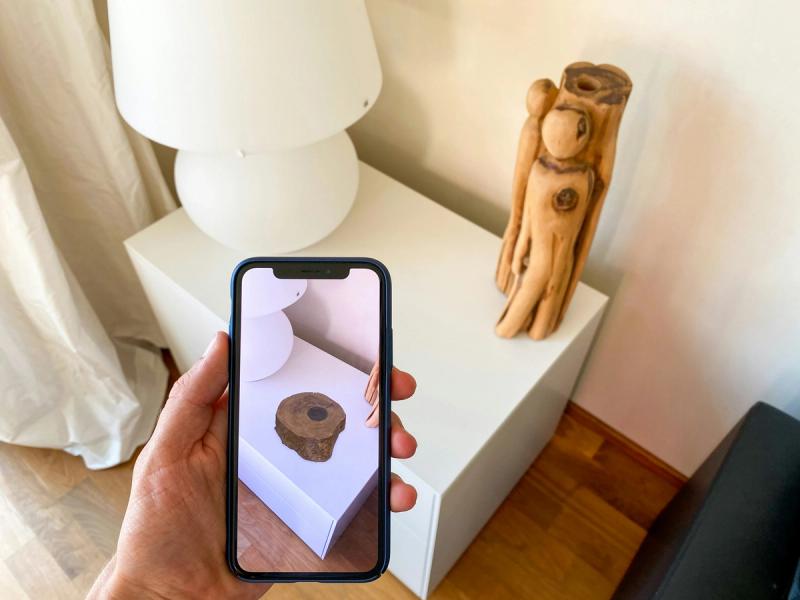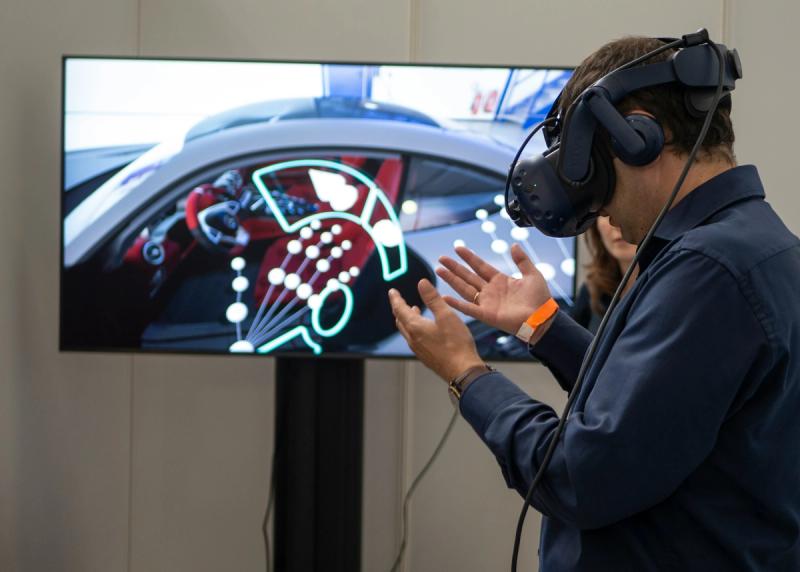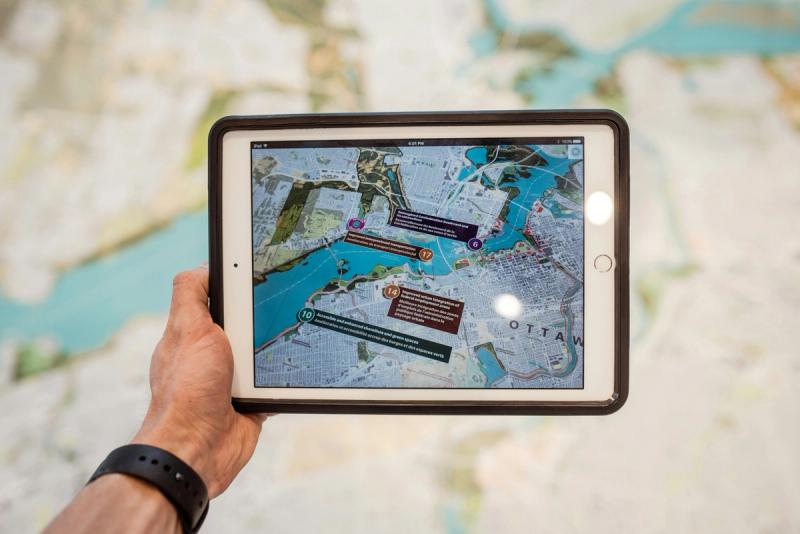Augmented Reality (AR) and Virtual Reality (VR) are no longer just the stuff of science fiction. These technologies have permeated various sectors, offering new ways to experience, interact with, and manipulate the world around us. As AR and VR continue to evolve, their impact on industries, daily life, and the future of human interaction grows exponentially. This blog explores the future of AR and VR, delving into their current state, advancements, potential applications, and the challenges that lie ahead.¶
Introduction to AR and VR#
Understanding AR and VR#
Augmented Reality (AR) overlays digital information onto the real world. This can be experienced through smartphones, tablets, and AR glasses, blending physical and digital realms to enhance our perception and interaction with our environment.¶
Virtual Reality (VR), on the other hand, immerses users in a completely virtual environment, usually through VR headsets. This technology creates a simulated reality, allowing users to experience and interact with a computer-generated world.¶
Current State of AR/VR#
AR and VR technologies have seen significant advancements in recent years. From gaming and entertainment to education and healthcare, their applications are vast and varied. Major tech companies like Google, Microsoft, Facebook, and Apple are investing heavily in AR/VR development, pushing the boundaries of what these technologies can achieve.¶
Market Growth and Trends#
The AR/VR market is experiencing rapid growth. According to recent reports, the global AR and VR market is expected to reach $209.2 billion by 2022, driven by increasing adoption in various industries, technological advancements, and rising consumer demand for immersive experiences.¶
The Evolution of AR/VR Technology#
Hardware Advancements#
1. Headsets and Glasses: Modern VR headsets like Oculus Rift, HTC Vive, and PlayStation VR offer high-resolution displays, improved motion tracking, and enhanced comfort. AR glasses, such as Microsoft HoloLens and Magic Leap, provide more seamless integration of digital and real-world elements.¶
2. Mobile AR: With the proliferation of smartphones and tablets, mobile AR has become more accessible. Platforms like ARKit (Apple) and ARCore (Google) enable developers to create sophisticated AR experiences for mobile devices.¶
3. Haptic Feedback: Haptic technology, which provides tactile feedback, is enhancing the immersive experience of AR/VR. Devices like haptic gloves and vests allow users to "feel" virtual objects, adding a new layer of realism.¶
Software and Content Development#
1. Advanced Graphics and Rendering: Improvements in graphics processing and rendering techniques have led to more realistic and visually stunning AR/VR environments. Techniques like ray tracing and photorealistic rendering are pushing the boundaries of visual fidelity.¶
2. Artificial Intelligence (AI): AI is playing a crucial role in AR/VR development. AI algorithms can enhance user interactions, improve object recognition in AR, and create more responsive and adaptive virtual environments in VR.¶
3. Content Creation Tools: The availability of user-friendly content creation tools is democratizing AR/VR development. Platforms like Unity and Unreal Engine provide powerful tools for developers to create immersive experiences without extensive programming knowledge.¶
Connectivity and Accessibility#
1. 5G Technology: The rollout of 5G networks is a game-changer for AR/VR. With its high bandwidth and low latency, 5G enables seamless streaming of high-quality AR/VR content, reducing the reliance on local processing power.¶
2. Cloud Computing: Cloud-based AR/VR solutions allow for more complex and data-intensive experiences by offloading processing to remote servers. This enables lighter and more affordable hardware while maintaining high performance.¶

Future Applications of AR/VR#
Healthcare#
1. Medical Training: AR/VR is revolutionizing medical training by providing realistic simulations for surgical procedures and emergency scenarios. Trainees can practice in a risk-free environment, improving their skills and confidence.¶
2. Remote Consultations: AR/VR facilitates remote consultations, allowing doctors to examine patients virtually. This technology can bridge the gap in healthcare access, especially in remote or underserved areas.¶
3. Rehabilitation: VR-based rehabilitation programs are helping patients recover from injuries and neurological conditions. Immersive environments and gamified exercises motivate patients and track their progress in real-time.¶
Education and Training#
1. Immersive Learning: AR/VR is transforming education by offering immersive learning experiences. Students can explore historical sites, conduct virtual science experiments, and interact with 3D models, enhancing their understanding and retention.¶
2. Professional Training: Industries such as aviation, manufacturing, and construction are using AR/VR for professional training. Simulations of complex machinery and hazardous environments allow trainees to practice safely and efficiently.¶
3. Special Education: AR/VR can provide tailored educational experiences for students with special needs. Customized environments and interactive content cater to individual learning styles and requirements.¶
Entertainment and Media#
1. Gaming: The gaming industry has been a pioneer in adopting AR/VR. VR gaming offers immersive experiences that transport players into fantastical worlds, while AR gaming blends digital elements with the real world, creating unique gameplay dynamics.¶
2. Film and Television: AR/VR is reshaping the film and television industry. VR films offer 360-degree experiences, allowing viewers to explore scenes from different perspectives. AR is enhancing storytelling by adding interactive elements to traditional media.¶
3. Live Events: AR/VR is revolutionizing live events, from concerts to sports. Virtual attendance allows fans to experience events from the best seats in the house, while AR enhances in-person experiences with real-time information and interactive elements.¶
Retail and E-commerce#
1. Virtual Showrooms: AR/VR is transforming the retail experience. Virtual showrooms allow customers to browse and interact with products in a 3D environment, making online shopping more engaging and informative.¶
2. Augmented Shopping: AR applications enable customers to visualize products in their real environment before purchasing. For example, AR can show how furniture will look in a room or how clothes will fit on a person.¶
3. Enhanced Customer Experience: AR/VR is enhancing customer service with virtual assistants and interactive product demonstrations. These technologies provide personalized and engaging shopping experiences, increasing customer satisfaction and loyalty.¶

Real Estate and Architecture#
1. Virtual Tours: AR/VR is revolutionizing the real estate market by offering virtual property tours. Potential buyers can explore homes remotely, getting a realistic sense of the space without the need for physical visits.¶
2. Architectural Visualization: Architects and designers are using AR/VR to create immersive visualizations of their projects. Clients can walk through virtual models, making it easier to understand design concepts and make informed decisions.¶
3. Remote Collaboration: AR/VR facilitates remote collaboration in architecture and construction. Teams can interact with 3D models in real-time, regardless of their physical location, streamlining the design and construction process.¶
Workplace and Collaboration#
1. Virtual Offices: The future workplace could be a virtual one. VR platforms allow employees to work in immersive virtual offices, fostering collaboration and communication as if they were in the same physical space.¶
2. Remote Meetings: AR/VR is enhancing remote meetings by creating virtual meeting rooms. Participants can interact with 3D models, share information, and communicate more effectively than with traditional video conferencing.¶
3. Training and Development: AR/VR is being used for corporate training and development programs. Simulated environments provide realistic scenarios for employees to practice skills and receive instant feedback.¶
Challenges and Considerations#
Technological Hurdles#
1. Hardware Limitations: Despite significant advancements, AR/VR hardware still faces challenges. Issues such as high costs, limited battery life, and ergonomic design need to be addressed to improve accessibility and user experience.¶
2. Software Development: Developing high-quality AR/VR content requires specialized skills and resources. Creating realistic and engaging experiences is complex and time-consuming, posing a barrier to widespread adoption.¶
3. Connectivity: While 5G and cloud computing are promising, reliable and high-speed internet access is not yet universal. Connectivity issues can limit the performance and accessibility of AR/VR applications, particularly in rural or underserved areas.¶
Ethical and Social Implications#
1. Privacy Concerns: AR/VR technologies often require extensive data collection, raising concerns about user privacy. Ensuring data security and user consent is crucial to addressing these concerns and building trust.¶
2. Psychological Effects: Extended use of AR/VR can have psychological effects, such as disorientation, motion sickness, and addiction. Understanding and mitigating these effects is essential to ensuring the safe and healthy use of these technologies.¶
3. Digital Divide: The adoption of AR/VR technology could exacerbate the digital divide, leaving behind those who lack access to the necessary devices or internet connectivity. Ensuring equitable access and addressing affordability issues is important for inclusive adoption.¶
Regulatory and Legal Challenges#
1. Intellectual Property: AR/VR content often involves complex intellectual property issues. Clear regulations and frameworks are needed to address ownership, copyright, and licensing of digital content.¶
2. Safety Standards: Establishing safety standards for AR/VR use is crucial to protect users. This includes guidelines for safe usage, health monitoring, and measures to prevent accidents and injuries.¶
3. Data Protection: Comprehensive data protection regulations are necessary to safeguard user information. Ensuring compliance with privacy laws and implementing robust security measures is vital to maintaining user trust.¶
Future Outlook: AR/VR in the Next Decade#
Integration with Other Technologies#
1. Internet of Things (IoT): The integration of AR/VR with IoT will create smarter and more interactive environments. For example, AR glasses could display real-time information from IoT devices, enhancing productivity and convenience.¶
2. Artificial Intelligence (AI): AI will continue to enhance AR/VR experiences by providing more intelligent and adaptive interactions. AI-driven avatars, natural language processing, and predictive analytics will create more immersive and personalized experiences.¶
3. Blockchain: Blockchain technology could address security and privacy concerns in AR/VR. Decentralized systems can ensure secure transactions, protect intellectual property, and provide transparent data management.¶
Societal and Cultural Impact#
1. New Forms of Interaction: AR/VR will redefine how we interact with digital content and each other. Social VR platforms will create new opportunities for socialization, collaboration, and community building.¶
2. Education and Awareness: Widespread adoption of AR/VR will drive education and awareness about the potential and responsible use of these technologies. This includes understanding their benefits, limitations, and ethical considerations.¶
3. Cultural Preservation: AR/VR can play a role in preserving and promoting cultural heritage. Virtual tours of historical sites, interactive exhibits, and immersive storytelling will make cultural experiences more accessible and engaging.¶

Industry-Specific Innovations#
1. Healthcare: AR/VR will continue to revolutionize healthcare, from advanced surgical simulations to mental health treatments. Personalized and immersive therapies will improve patient outcomes and enhance the overall healthcare experience.¶
2. Education: AR/VR will become integral to education at all levels. Immersive learning environments, virtual classrooms, and interactive content will make education more engaging, inclusive, and effective.¶
3. Entertainment: The entertainment industry will see continued innovation in AR/VR, with new forms of interactive media, immersive storytelling, and virtual experiences. The lines between physical and digital entertainment will blur, creating new possibilities for creators and consumers.¶
Economic and Business Impact#
1. New Business Models: AR/VR will create new business models and revenue streams. From virtual real estate to AR advertising, businesses will find innovative ways to leverage these technologies for growth and profitability.¶
2. Workforce Transformation: The adoption of AR/VR will transform the workforce. New job roles will emerge, requiring specialized skills in AR/VR development, content creation, and user experience design. Businesses will need to invest in training and upskilling to meet these demands.¶
3. Global Market Expansion: AR/VR will drive global market expansion, enabling businesses to reach new audiences and markets. Virtual experiences will transcend geographical boundaries, offering new opportunities for international growth and collaboration.¶
Conclusion: Embracing the Future of AR/VR#
The future of AR/VR is bright and full of potential. As these technologies continue to evolve, they will transform various aspects of our lives, from how we work and learn to how we interact and entertain ourselves. However, realizing this potential requires addressing the challenges and ethical considerations associated with AR/VR adoption.¶
Embracing Innovation#
Businesses, educators, healthcare providers, and policymakers must embrace innovation and stay informed about the latest developments in AR/VR. By investing in research, development, and education, we can harness the power of these technologies to create a better and more connected world.¶
Ensuring Ethical and Inclusive Adoption#
Ensuring ethical and inclusive adoption of AR/VR is crucial. This includes protecting user privacy, addressing the digital divide, and promoting responsible use. By prioritizing these considerations, we can build a future where AR/VR benefits everyone, regardless of their background or circumstances.¶
Looking Ahead#
As we look ahead, the possibilities for AR/VR are endless. From enhancing our daily lives to driving economic growth and innovation, these technologies have the potential to shape the future in profound and exciting ways. By staying informed, embracing change, and addressing challenges, we can unlock the full potential of AR/VR and create a more immersive, interactive, and connected world.¶














